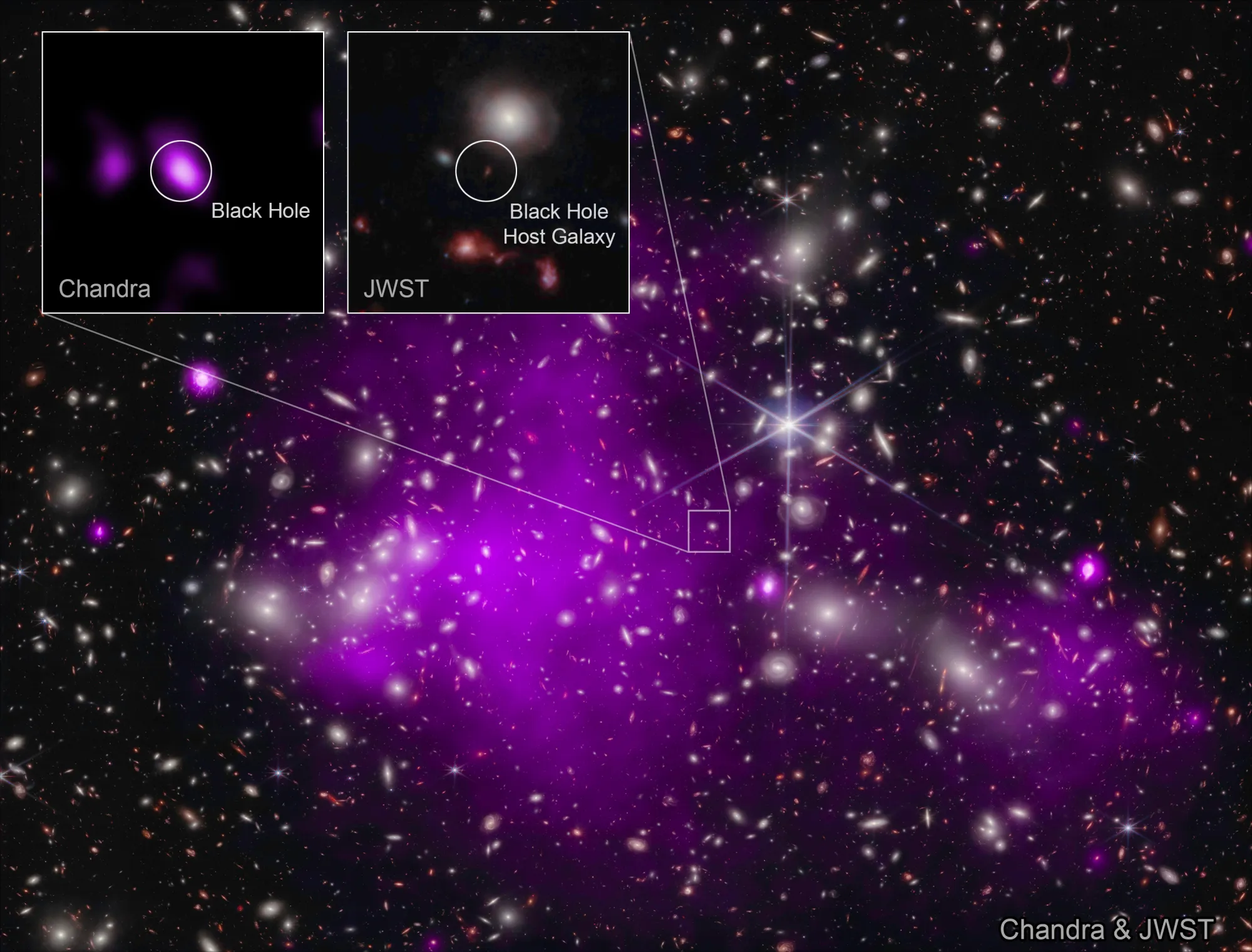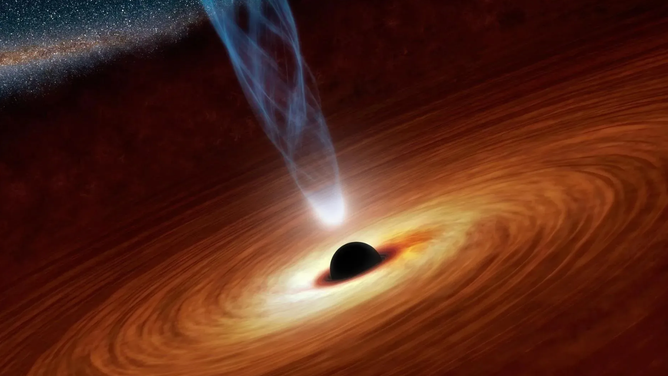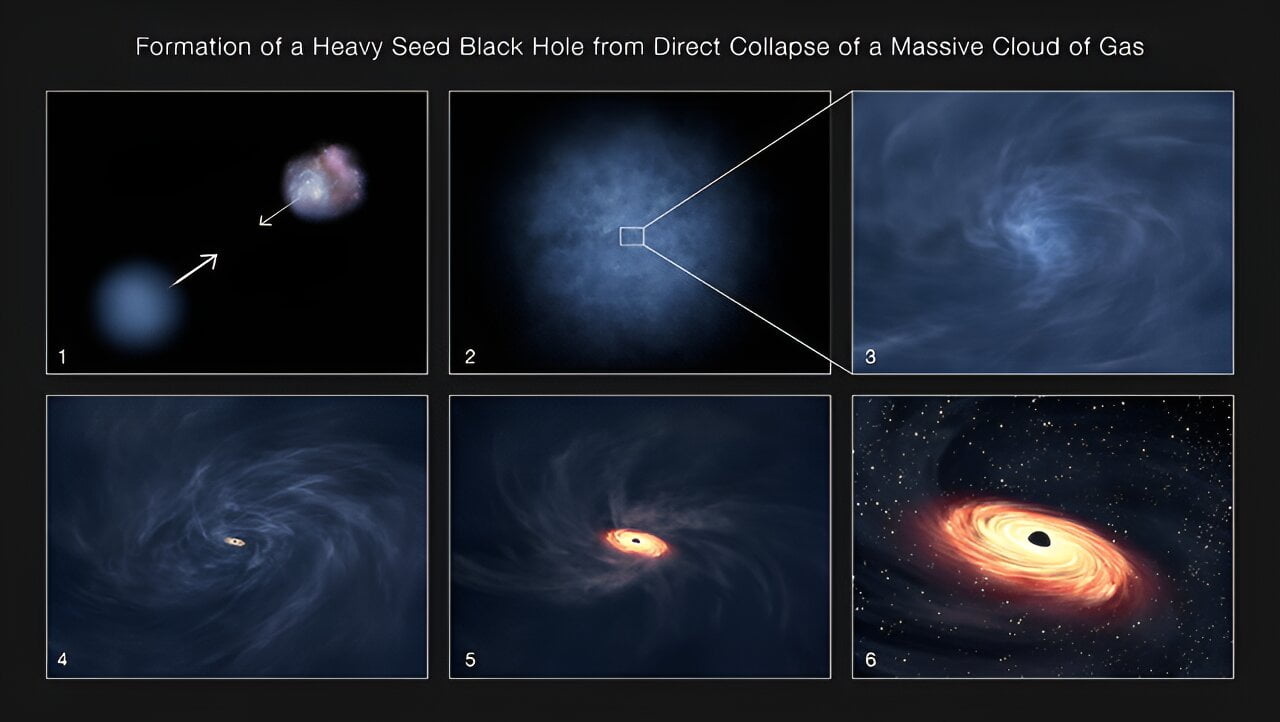Explore NASA’s groundbreaking discovery of a record-breaking black hole. Learn the science and mysteries behind it in our comprehensive article.
NASA Telescopes Discover Black Hole 2023
NASA telescopes have discovered the existence of the most distant black hole ever seen in X-rays, a ground-breaking finding that has astronomers buzzing. This outstanding accomplishment provides new insight into the early phases of black hole development, when the black hole’s mass is similar to that of its host galaxy. We will examine the fascinating discoveries, the technology underlying this discovery, and the implications for our comprehension of the universe in this piece.

The Unveiling
Equipped with information from the James Webb Space Telescope and NASA’s Chandra X-ray Observatory, astronomers have discovered a distinct black hole that formed 470 million years after the Big Bang. This discovery, which is situated in the UHZ1 galaxy, has expanded our understanding of the universe’s enigmatic origins.
The Telltale X-Rays(NASA Telescopes Discover Black Hole)
X-ray emissions have long been regarded as the calling card of a growing supermassive black hole. In this case, they were the breadcrumbs leading astronomers to their groundbreaking discovery. The emission of X-rays from the black hole in UHZ1 offers a fascinating glimpse into the early moments of these cosmic giants’ formation.
The Cosmic Magnifying Glass
Scientists had to rely on gravitational lensing, a cosmic magnifying glass effect, to photograph this secretive black hole. The X-rays from the supermassive black hole and the light from the galaxy were both enhanced via gravitational lensing. Researchers were able to identify the feeble X-ray source and acquire essential data because of this significant phenomena.
An Enigmatic Galaxy
UHZ1, the host galaxy of this remarkable black hole, resides in the direction of the galaxy cluster Abell 2744, positioned 3.5 billion light-years from Earth. However, Webb data revealed that UHZ1 is even more distant, existing 13.2 billion light-years away from our planet. This temporal gap places this discovery in a fascinating epoch when the universe was just 3% of its current age.
The Growth of Black Holes
The formation of these supermassive black holes is one of the key mysteries raised by this finding. And how did they get their enormous masses so soon after the Big Bang? Are they created by the direct collapse of enormous gas clouds, which resulted in the formation of black holes that are 10,000–100,000 times heavier than the Sun? Or perhaps they are the result of the violent demise of early stars, producing black holes that are between 10 and 100 times as massive as the Sun?

Planting Seeds of Knowledge
As Andy Goulding of Princeton University aptly puts it, “There are physical limits on how quickly black holes can grow once they’ve formed, but ones that are born more massive have a head start. It’s like planting a sapling, which takes less time to grow into a full-size tree than if you started with only a seed.” This analogy provides a simple yet profound insight into the birth and growth of black holes.
Outsize Black Hole
Strong evidence that the recently discovered black hole was huge at birth has been given by the team under the direction of Akos Bogdan of the Center for Astrophysics at Harvard & Smithsonian. Its mass is thought to be between 10 and 100 million times that of the Sun. The black holes in our neighboring universe, on the other hand, usually hold barely a tenth of a percent of the mass of stars in their host galaxy. This is a startling difference.
A Cosmic Milestone
The existence of this ‘Outsize Black Hole’ and the compelling evidence of black holes forming from massive gas clouds represent a remarkable milestone in our understanding of the cosmos. We are witnessing a brief stage where a supermassive black hole is on par with the stars in its galaxy, before it eventually surpasses them.
Expanding Our Cosmic Canvas
These are only preliminary results. To provide a more complete picture of the early cosmos, scientists intend to combine data from other telescopes with findings from the James Webb Space Telescope. The universe’s mysteries keep coming to light, motivating us to go further into the great unknown.
In a synopsis
The most distant black hole ever found using X-rays is proof of our ingenuity and our unquenchable curiosity in the universe. This discovery not only broadens our knowledge of supermassive black holes but also sheds light on the mysterious origins of the early cosmos. The secrets of the cosmos are closer to us as long as we keep expanding our understanding.
